There are few kitchen tools that are as simple, versatile and enduring as the classic dutch oven. And while we refer to them as “dutch ovens” or “casserole dishes” in America, there are very similar examples of this classic pot in many other cultures. This is a testament to the flexibility and utility that comes with using this classic pot.
Dutch Oven History
The origins of the dutch oven come from the Netherlands (as you might expect from something with the word “dutch” in its name) during the 17th century. At the time, the most valued cookware was being made of expensive materials such as copper and brass. And the Dutch were some of the finest craftsmen of the day, supplying much of the world’s finest cookware.
But an English craftsman named Abraham Darby thought that he could do better. He believed that there was a market for less expensive cookware. The key to this was using cheaper materials such as cast iron. But this posed a challenge. The Dutch method of casting used sand molds to achieve a fine sheen to the finished material. The English methods at the time used molds made primarily of clay. Darby and his right-hand man, James Thomas, set out to find a way to cast iron using sand molds.
Their first attempts were failures as working with molten iron differed from the brass that they were used to using. But eventually, they succeeded in creating a method for casting iron in sand molds. This made the process cheaper and more efficient. And it allowed them to bring cheaper, more durable cookware to the market rapidly.
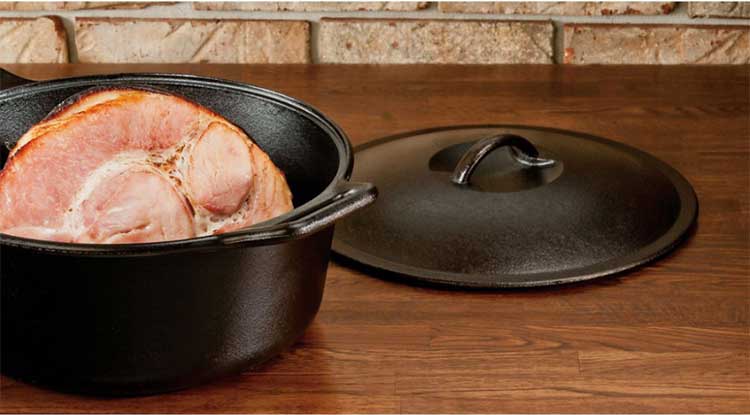
Dutch Oven Uses
The dutch oven has always been a simple concept. At its simplest, the dutch oven is a covered pot. But it’s really much more than that. Its earliest uses were for cooking directly in open flames. This is why the pot needed to be so rugged. And it is also why the pot needed a well-fitted lid. Who wants embers and ash from a fire getting into their food?
Even today, variants of the dutch oven are a staple for campfire cooking. Referred to as a camping or cowboy dutch oven, the cast iron construction makes it ideal to withstand the rigors of cooking in an open-flame environment.
As the pot evolved, American style dutch ovens added small legs to the pot to elevate it a bit over the coals. And some pots used an attached, hinged lid to be sure that the topper stayed on to keep unwanted material out of the food being cooked.
Interestingly, dutch oven pots can actually be stacked upon one another while cooking. The bottom of one pot serves as the lid of the one below it. The heat is conserved and transmitted upward. There are examples of pots being stacked 5 or 6 pots high using this technique.
Recipes & Foods to be Cooked
The first thing we often think about when thinking about the uses of a dutch oven are things like stews or soups. And while the pot is perfectly suited for such creations, it sells the concept short to limit its usefulness to just liquid dishes. With a little creativity, the dutch oven can be used very similarly to a traditional oven to make baked goods such as breads and rolls.
A dutch oven is also very well-suited to cook, fry or braise meats. But with a little creativity, you can do even more. By placing wire racks inside the dutch oven, you can actually create two cooking regions that allow for some sophisticated cooking.
America’s Test Kitchen offers up its 6 Rules to Follow When Cooking with a Dutch Oven which include keeping your ingredients simple and cooking in stages to create the best results.
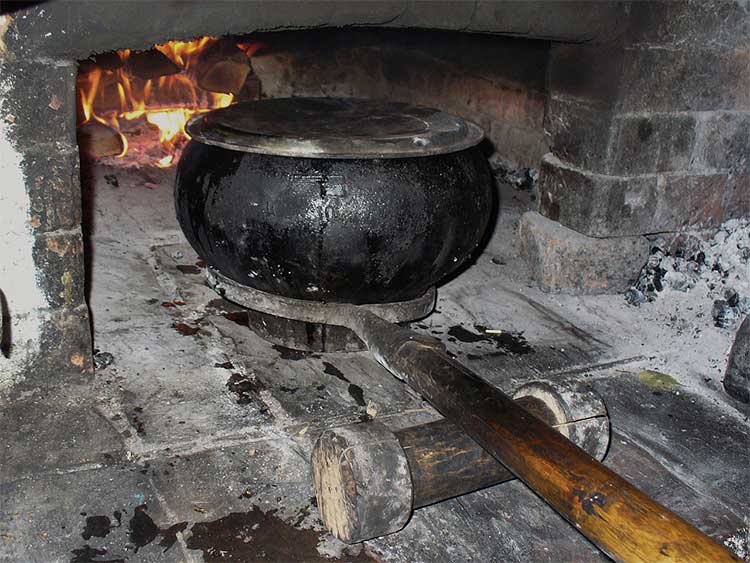
Dutch Ovens Around the World
As we mentioned, the dutch oven may be the most popular name for this simple covered pot, but the concept is found in many cultures around the globe.
For example, in Eastern Europe and Central Asia (mostly Russia), they use a pot called a chugunok. The chugunok is is a handle-less crock meant to be placed in an open flame cooking hearth. Because it has no handles, there is a special long-handled tool used to remove the pot from the coals. But in actual usage, it is virtually identical to what we know as a dutch oven.
In South Africa, the have something known as a potjie which translates to “little pot.” Again, it is used for cooking over open flame or coals just like a dutch oven.
In Australia, they use a pot that is similar to the cowboy or camping dutch ovens that they call a bedourie camp oven. The key difference here is that the bedourie is typically made of steel instead of the more traditional cast iron.
In Bulgaria, they use something called a Sač which is an iron or ceramic pot with a lid that is intended to be completely buried among the coals and ash for cooking all around.
Similar pots can be found all around Japan and the rest of Asia as well. Native Americans used similar pots in their cooking too. It’s just a great concept that was replicated around the world.
So what do they call it in the Netherlands? The Dutch refer to these pots as braadpan or sudderpan which translate to “roasting pan” or “simmer pan” respectively.
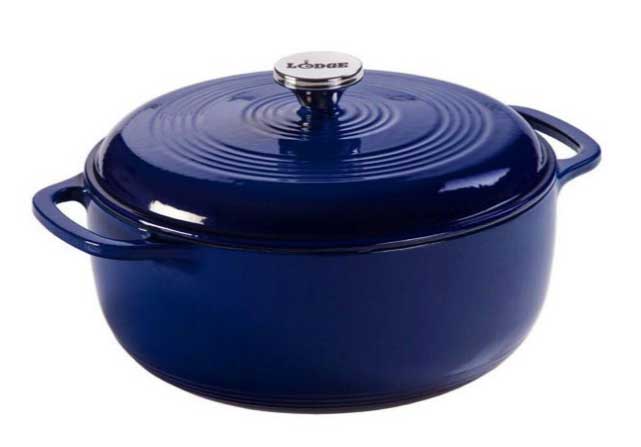
Dutch Oven Buying Guide
There are just a few important considerations for you to make when considering your dutch oven purchase. Let’s walk through the main points.
First and foremost, you will want to consider the size of the pan you need. Larger pans are great for creating lots of food. But if you feel that you will be making smaller dishes, a smaller pot will work better for you. Cooking small batches in a large pot can be tricky since it takes longer to heat the entire pot. And things may not heat evenly. So pick the right pot size for the job.
The next choice you must make is the finish you prefer. Modern dutch ovens come in two common varieties: bare cast iron or enameled with a cast iron or ceramic base.
Bare Cast Iron
Each of these has their advantages and disadvantages. Many cooks swear by the all cast iron models as they say it warms more evenly, retains the heat better and is more durable (i.e. scratch-resistant). But bare cast iron definitely requires more care. As we note in our article on the preparation and care for your cast iron cookware, these pots often need to be pre-seasoned before use.
And clean up can be a little more involved as well. You can’t simply toss your cast iron dutch oven in the dishwasher. Typically, you clean these pots by boiling water in them and then scrubbing with a brush or a sponge.
Some chefs insist on oiling the inside surfaces regularly as well. And if you are storing the pot with the lid on, it is suggested that you leave a paper towel or other moisture-wicking material inside the pot to absorb excess moisture that might accumulate.
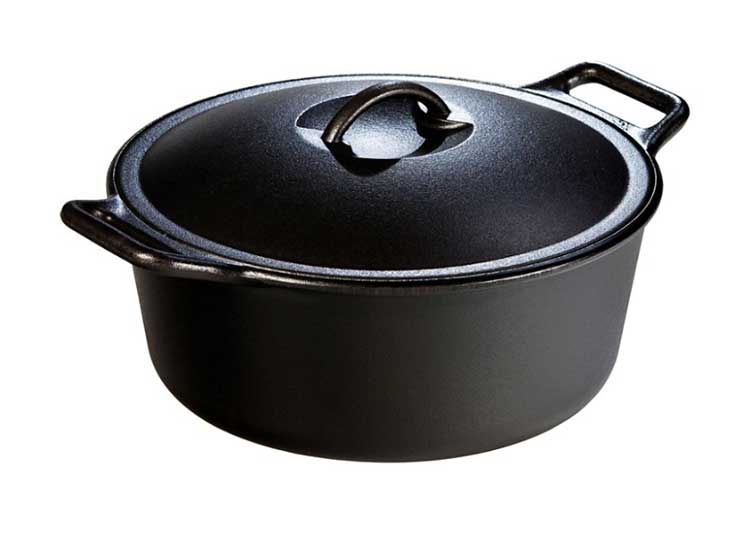
Enameled Cast Iron
Enameled cast iron has become popular in some circles. The most obvious draw to the enameled cookware are all the fun colors that can be used.
But these colors come with some cost. Some chefs insist that the enameled cookware does not heat as evenly nor does it retain the heat as well as the bare cast iron. Plus, the enameled surfaces are subject to scratching. And that can diminish the look of the piece over time.
However, many enameled pieces can be cleaned in the dishwasher. This can be a real time-saver. And while they can be stored easily, stacking should be avoided to eliminate scratching to the exterior.
Another advantage that some chefs cite for the enameled cookware is the lighter interiors. Having a lighter surface makes it easier to assess the cooking progress and browning of foods cooked inside. With a bare cast iron dutch oven, it can be difficult to see the contents in contrast to the dark insides.
Other Materials
You can achieve similar cooking results using materials other than cast iron. The most popular alternate material is obviously stainless steel. We often see this material used for camping dutch ovens to reduce the weight and increase portability. While it is lighter than cast iron, it isn’t as durable. And according to most chefs, it won’t hold the heat nearly as well as cast iron. However, depending on your intended use, stainless steel may be a good option for you.
There is also a ceramic option, but those are typically enameled over just like the enameled cast iron.
Browse, Shop, Buy
Take a brief tour of some of the variety of dutch ovens available or visit our Dutch Oven section to see the whole line.

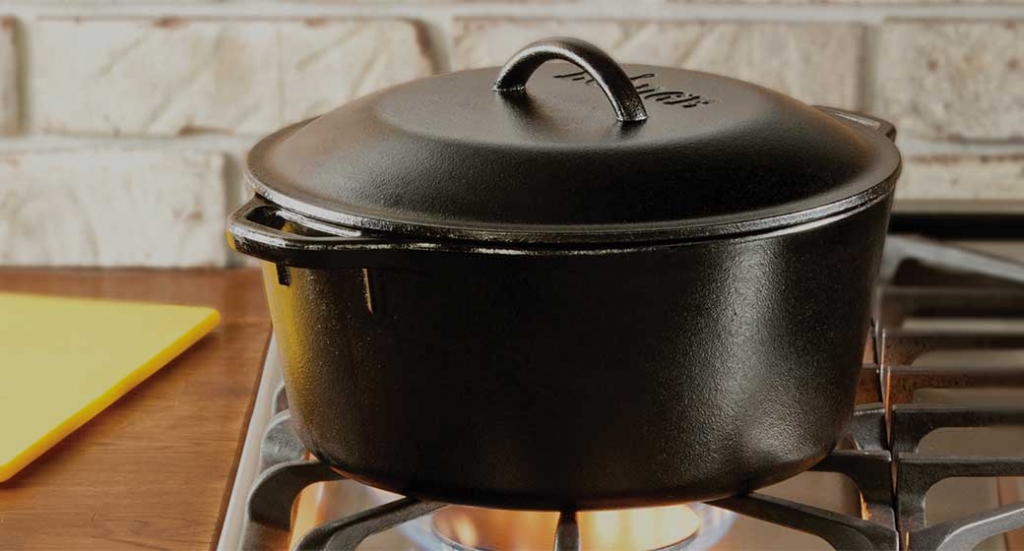

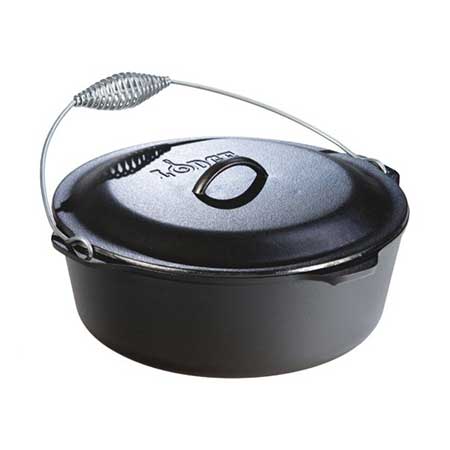
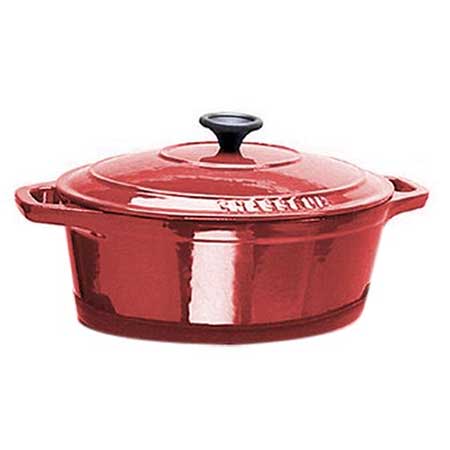
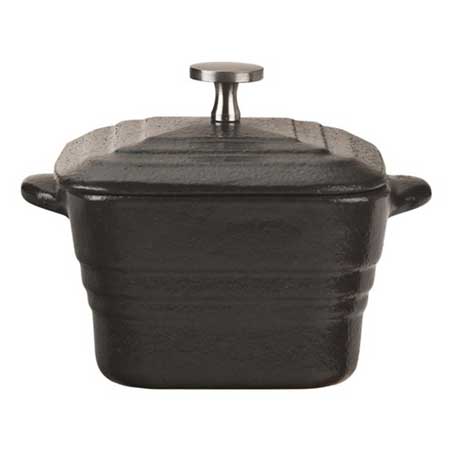
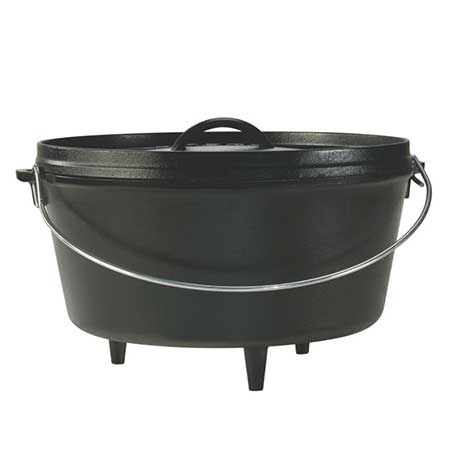
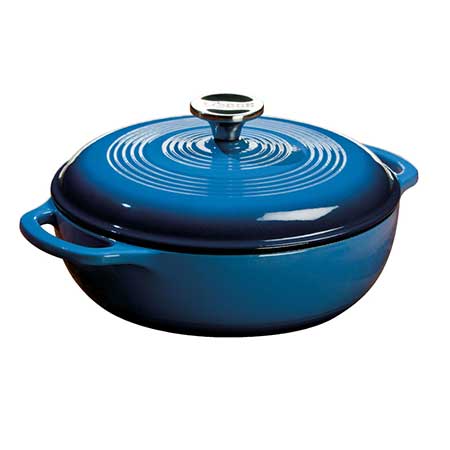
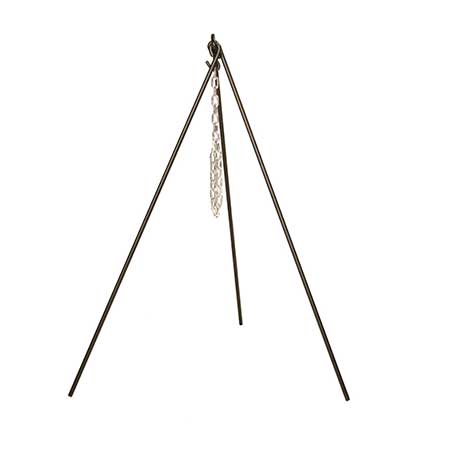
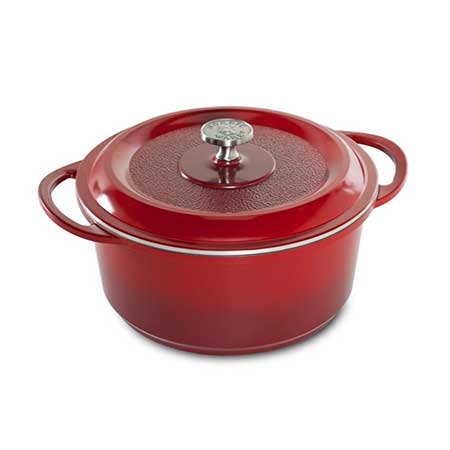
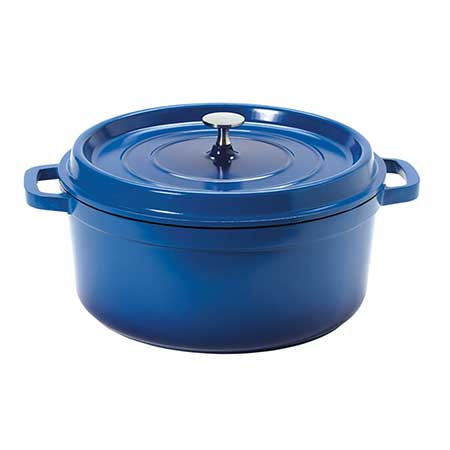
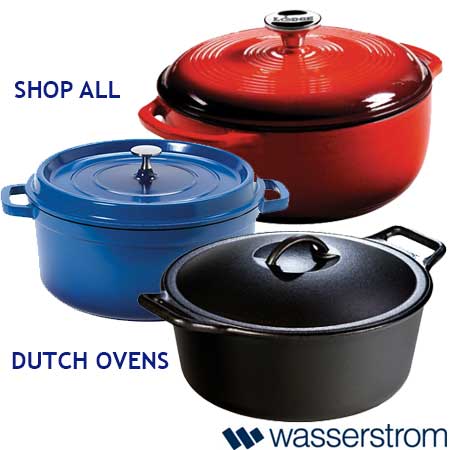

The Best Cast-Iron Cookware and Accessories To Add to Your Collection – Happy Treats Online
How Big is 10 Cubic Feet (Comparison Guide) - MeasuringKnowHow
The Best Cast-Iron Cookware and Accessories To Add to Your Collection - Mentalfloss - World news | Fast news | Us News
20 Southern Sayings About the Heat - How to Say It’s Hot Outside
Can You Use A Dutch Oven In A Microwave? – Michelle
Curious About Cast-Iron Cooking? Here’s the Cookware You Need, Plus Everything To Maintain It - Webnedio
Dutch Oven Pot Roast - The Keeper at Home
20 Southern Phrases About the Heat - Hotter than Sayings & More
Top 10 Dutch Oven Dessert Recipes - Trendgredient
Dutch Oven Desserts : 5 Easy & Delicious Recipes
How Big is 10 Cubic Feet (Comparison Guide) - MeasuringKnowHow